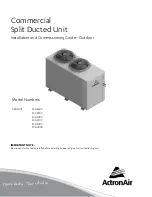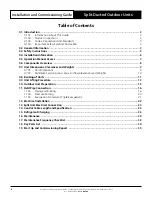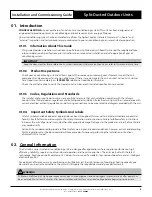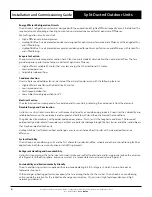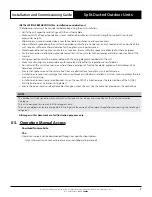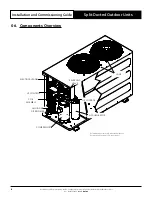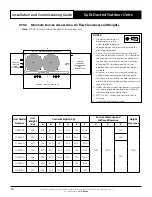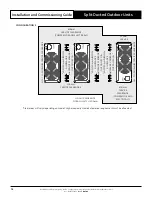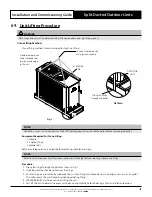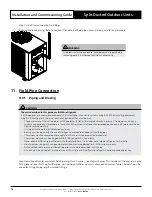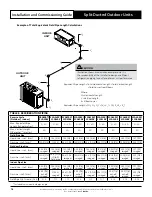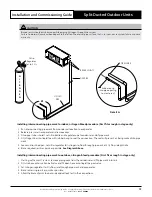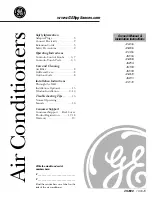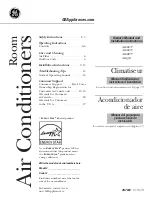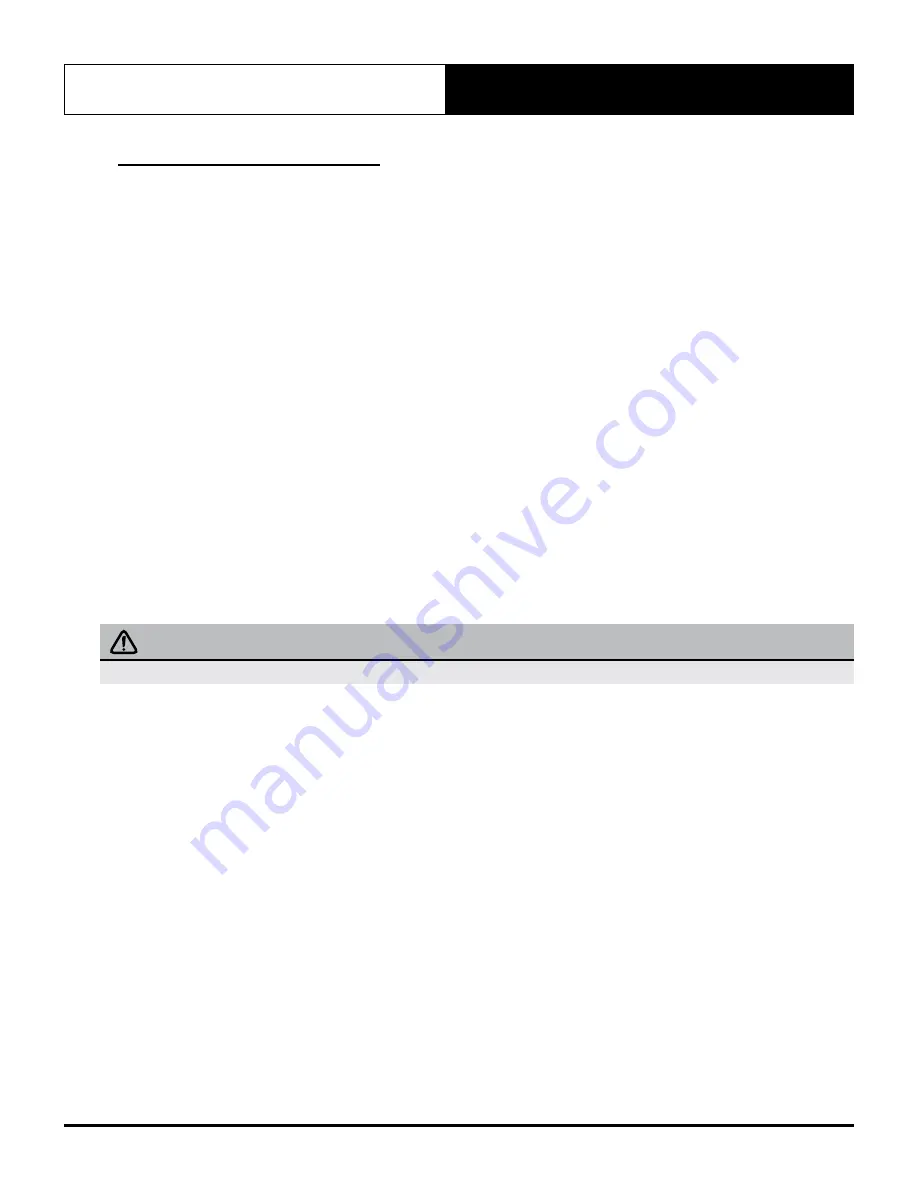
Installation and Commissioning Guide - Standard Commercial Split Ducted Commercial Outdoor Unit
Doc. No.0525-056
Ver. 7 220308
Installation and Commissioning Guide
Split Ducted Outdoor Units
6
04. Installation Information
All service technicians handling refrigerant must be licensed to handle refrigerant gases.
Recover and Recycle Refrigerants
Never release refrigerant to the atmosphere! It is an offence in Australia to do so. Always recover, recycle and reuse
refrigerants. When removing from the system, properly contain and identify refrigerants in its dedicated container for
proper disposal and/or storage. Always consider the recycle or reclaim requirements of the refrigerant before beginning
the recovery procedures. Obtain a chemical analysis of the refrigerant if necessary. For the recovered refrigerant and
acceptable refrigerant quality refer to the existing standards and regulations.
Refrigerant Handling and Safety
Consult the refrigerant manufacturer’s Material Safety Data Sheet (MSDS) for information on proper handling and to
fully understand health, safety, storage and disposal requirements. Use the approved containment vessels and refer to
appropriate safety standards. Comply with all applicable transportation standards when shipping refrigerant containers.
Service Equipment and Recovery Procedures
Always use refrigerant reclaiming equipment in order to minimise refrigerant emissions. Use equipment and methods
which will pull the lowest possible system vacuum while recovering and condensing refrigerant. Equipment capable of
pulling a vacuum of less than 500 microns is required.
Do not open the system to the atmosphere for service work until refrigerant is fully removed and/or recovered. Perform
refrigeration system evacuation, prior to charging, in accordance with AIRAH / IRHACE Refrigerant handling code of
practice.
Let the unit stand for 1 hour and with the vacuum not rising above 500 microns. A rise above 500 microns indicates a leak
from the system and a leak test is required to locate and repair any leak.
CAUTION
A leak test is always required on any repaired section of the refrigeration system.
Charge refrigerant into the system only after the equipment does not leak or contain moisture. Ensure that R-410A is
only charged in liquid form. Take into consideration the correct amount of refrigerant charge specified for the system
to ensure efficient unit operations. When charging is complete, reclaim refrigerant from charging lines into an approved
refrigerant container. Seal all used refrigerant containers with approved closure devices to prevent unused refrigerant
from escaping to the atmosphere. Take extra care to maintain all service equipment directly supporting refrigerant service
work such as gauges, hoses, vacuum pumps and recycling equipment.

